Google Drive is one of the most famous cloud storage platforms in the world today. Cloud storage has become one of the major needs of individuals and businesses these days. This need has resulted in individuals seeking knowledge on how to upload folder in Google Drive.
There are different methods because you can access Google Drive on different devices. From Android phones to iPhones and computers. We will show you different methods to upload folder to Google Drive on different devices. Without further ado& let’s dive straight in.
Table of Contents
Part 1: How to upload folder to Google Drive from Android
It is no secret that Google Drive is highly rated and is one of the most secure cloud storage platforms. Asides being a safe location for files& it allows for easy file sharing. Google Drive encourages productivity among teams since it integrates with G-Suite.
In this section& we will show you how to upload folder to Google Drive from Android. Before we go ahead& note that this process is very easy. The time required depends on your network strength and how large the folder is.
There is a wide array of folders that you can upload to Google Drive from Android. They include documents& photos& videos& and audios. Google Drive gives you up to 15GB free storage on its free account. So if you don’t have one yet& quickly open one before we go ahead.
Here are the steps to upload folders to Google Drive from Android
Step 1 – Tap on Google Drive on your Android device. The icon is a triangular logo& and you’ll find it under Google apps.
Step 2 – If you are already logged in& the Drive homepage opens directly. Otherwise& you will need to log in using your Gmail and password.
Step 3 – Tap on the Add icon (a plus sign at the lower-right part of your screen).
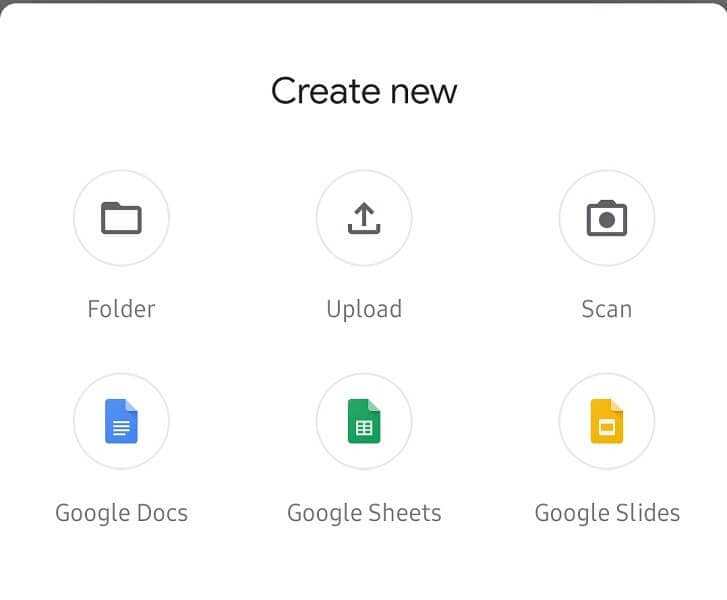
Step 4 – Tap on the folder to create a new folder. This is the destination where you will store the contents of the folder you need to upload. You need this because there is no freeway to upload folders from Android. The only way is to upload the contents on the folder to a replica folder in Google Drive.
Step 5 – In the new folder you have created& tap the Add icon again. This time& select Upload. This will lead you to select the contents of the folder you want to upload.

Step 6 – Since you are uploading multiple files& hold down the first file& and when it selects& tap on the other files.
Step 7 – Tap Open/Upload (located at the top-right of your screen) to begin the upload process.
Congratulations!!! You have just learned how to upload folder to Google Drive from Android. Note that you decide to upload the folders using mobile data or Wi-Fi. When you decide& alter the settings under the Data usage option in the Settings menu of Google Drive.
Part 2: How to upload folder to Google Drive from iPhone
In this section& we will look at how to upload folder to Google Drive from iPhone. If you followed the previous section's steps carefully& you shouldn’t find this difficult to understand. Like Android devices& there isn’t a freeway of uploading folders to Google Drive on iPhone.
This means that you need to create a replicate folder in Google Drive first. After you do this& you can start uploading the content of your desired folder to the new folder in Google Drive.
You probably think this is a very stressful and confusing process. On the contrary& it isn’t. When we break it down into simple steps& you’ll understand it better.
Step 1 – Tap the Drive icon on your iPhone. You should be logged in automatically. If you aren’t& then provide your Gmail address and password to log in.
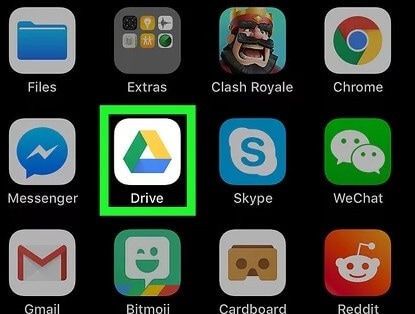
Step 2 – On the homepage& tap on Add new (the plus sign located towards the right-bottom of the screen). This will provide you a list of options& select Folder to create a new folder.
Step 3 – Tap the Add new icon again. This time& tap the Upload option and select the files in the folder you need to upload.
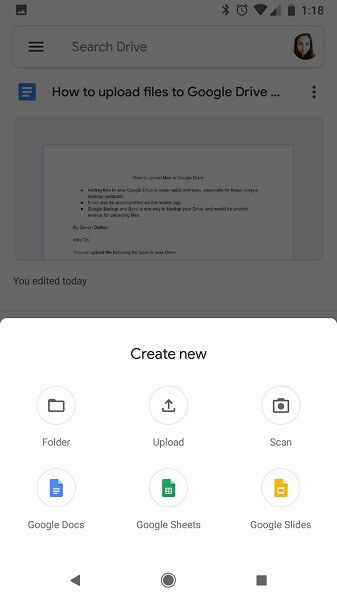
Step 4 – Find the files you need to upload in the folder and tap them if the files you want to upload are videos or photos& tap Photos& and Videos.
Part 3: How to upload multiple folders to Google Drive
Just like you& many people seek for how to upload multiple folders to Google Drive. The first thing you should note about this process is that it only works on a computer. You cannot upload multiple files to Google Drive on Android or iPhone.
With this out of the way& there are three ways to upload multiple files to Google Drive. They include:
- Using the New Button
- Using Drag and Drop
- Using Backup and Sync
We will explain each of these methods briefly by splitting them into steps.
Method 1 – Using the New Button
In this case& you will be using the New button on the homepage of Google Drive. Note that when you use this method& you can only select a single folder. Thus& to upload multiple folders& you’ll have to put the folders together in a single folder before uploading.
Follow these steps to upload multiple folders to Google Drive using the New button.
Step 1 – Create a new folder on your computer. Move all the folders that you need to upload into this folder.
Step 2 – Open Google Drive in your favorite web browser. If you are not already logged in& provide your login details.
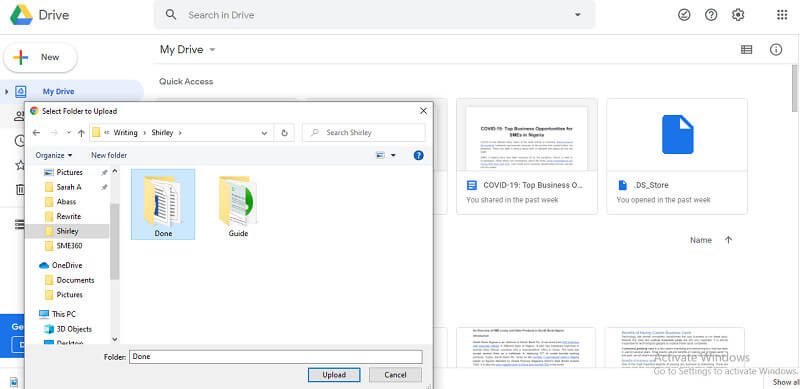
Step 3 – Tap on New. The button is on the left pane of the screen just beneath the Google Drive logo. From here& click on Folder Upload to choose the folder you created on your computer.
Step 4 – After selecting the folder& click Upload. The upload process begins immediately.
Note that the speed of the process depends on the size of the folder and your network strength.
Method 2 – Using Drag and Drop
Looking for how to upload multiple folders to Google Drive? This is about the easiest method available. Here’s how to do this.
Step 1 – Open Google Drive in your favorite web browser.
Step 2 – Open your File Explorer and select the folders that you want to upload.
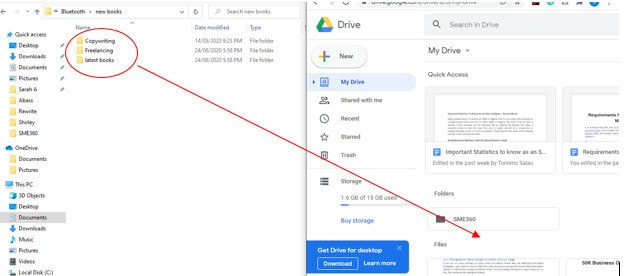
Step 3 – Create a new folder in your Google Drive by tapping the New button and selecting Folder.
Step 4 - Drag the folders that you selected earlier (in Step 2) to the new folder and drop them there.
The folders will begin to upload automatically.
Method 3 – Using Backup and Sync
Backup and Sync is an application that you need to download on your computer. When you do& it creates a folder labeled Google Drive on your PC. Whatever you copy into this folder syncs with your Google Drive account by default. Here are the steps below:
Step 1 – Install Backup and Sync on your PC.
Step 2 – Open your File Explorer and you will see a new folder& Google Drive.
Step 3 – Select the folders you want to upload to Google Drive and drag them to the new folder. This will automatically upload them to Google Drive.
Part 4: How to upload zip folder in Google Drive
Google Drive allows you to upload all kinds of files. You can upload files that you can edit like PDFs& Documents& Sheets& and Presentations. Google Drive also allows you to upload files that you cannot edit& such as videos and music. Zip folders fall under the second category of files& files that you cannot edit.
You can upload a zip folder to Google Drive using two methods:
- Drag and Drop
- New button.
Method 1 – Using Drag and Drop
Step 1 – Open Google Drive in your web browser.
Step 2 – Open your File Explorer and go to the location of the zip folder.
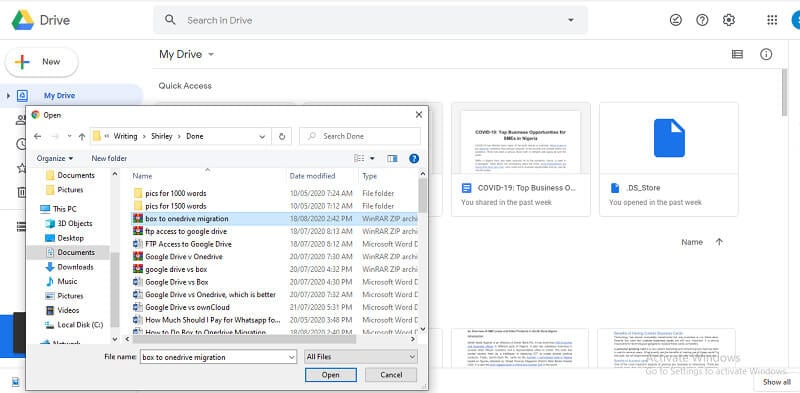
Step 3 – Drag the zip folder to the Google Drive window and drop it. The zip folder uploads automatically.
Method 2 – Using the New Button
Step 1 – Open Google Drive and click the New button.
Step 2 – Select File Upload and go to the location of the zip folder.

Step 3 – Select the zip folder and click Open to begin the upload.
Part 5: Google Drive upload to shared folder
The easiest way to Google Drive upload to shared folder is the drag and drop method. To do this& you must have access to the shared folder on Google Drive. Here’s how to carry out this process:
Step 1 – Open the shared folder where you need to upload the file.
Step 2 – Go to the location of the file in your Local File Explorer.
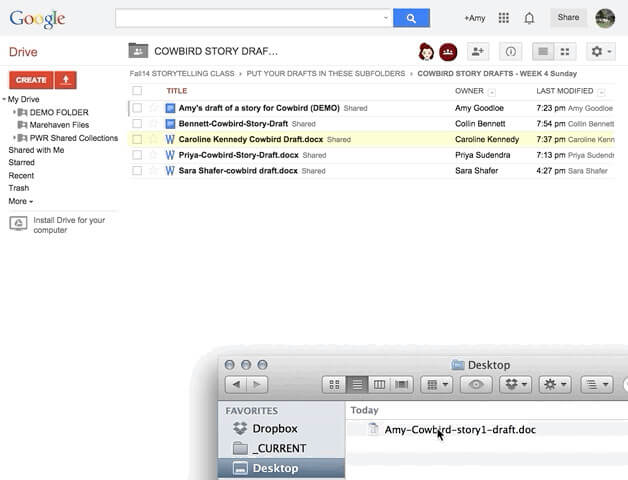
Step 3 – Drag the file from this location and drop it in the shared folder.
The upload process begins immediately. Simple& right?
Conclusion
There you go& now you know how to upload folder in Google Drive. We have shown you how to do this across several devices as well. Did we leave anything out? Share with us in the comments section.






 100% Secure
100% Secure